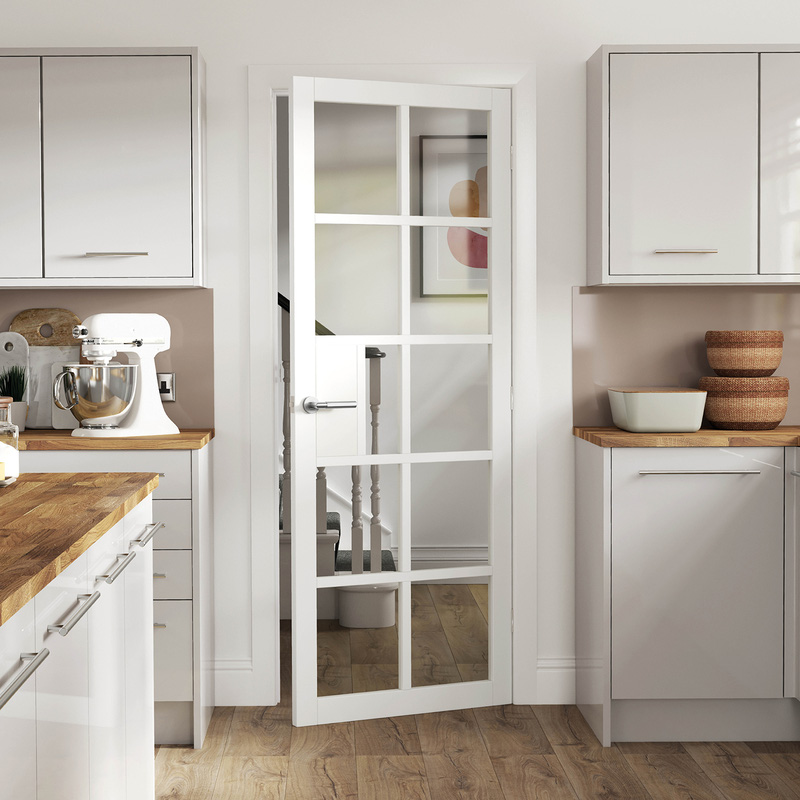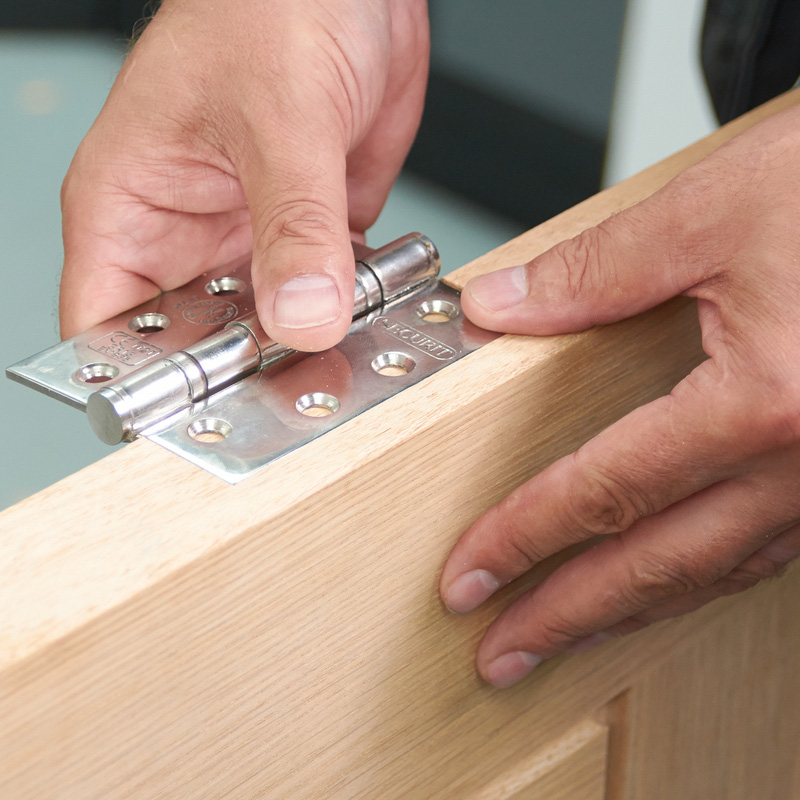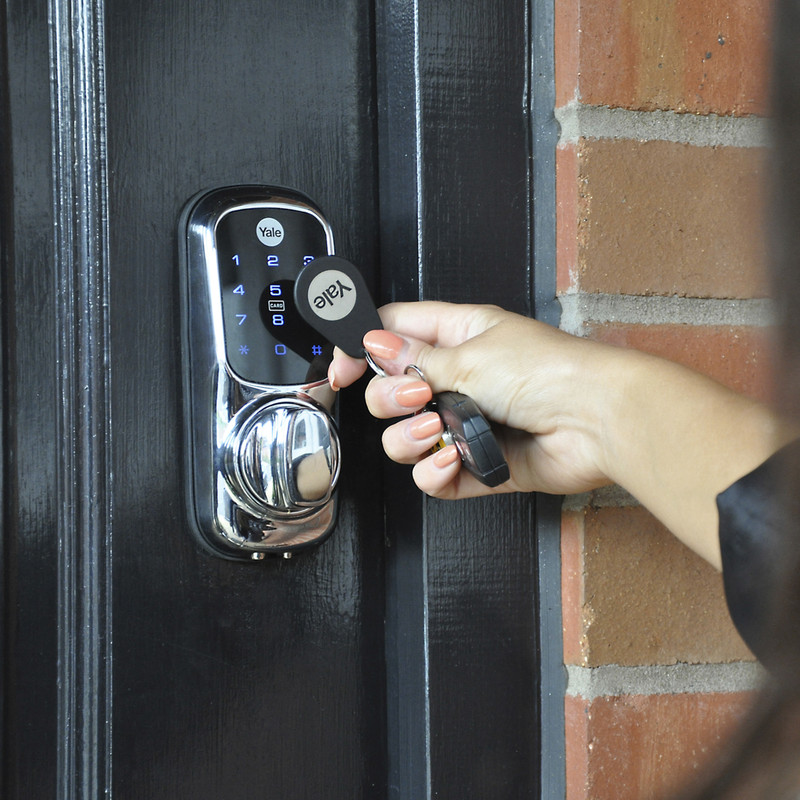Whether you’re trying to add privacy to your bedroom or looking to reduce noise in your home office, the right door can make all the difference. But with so many options to choose from, how do you know which door is right for you? Fear not – from core structures to decorative styles, we’ll cover all you need to know to make the right decision.
Door style – including shaker, panel, cottage and flush – give you the freedom to choose the perfect look and feel for your space. If you’re looking for something traditional, a panel door is a classic choice – while shaker doors combine traditional and contemporary styles for added character.
For extra protection, you’ll find fire-rated doors which can prevent fire spreading for up to 30 minutes – perfect for commercial environments, flats, or anywhere else you need it. Finally, you can’t forget door hardware such as handles and hinges for added style and functionality.
Types of Internal Door Core Composition
The internal composition of doors affects the noise that can pass through, how heavy or lightweight the door is, and can even play a part in making the door fire-safe. The three main types of internal door composition you’ll find at Toolstation are standard core, semi-solid core, and solid core.
Standard Core Doors
Hollow internal doors are a standard type of door with a cellular structure inside. They have a solid frame around the outside and a honeycomb structure made from cardboard, paper or plastic inside the frame.
standard cores are the most common composition for internal doors as they’re lightweight and relatively inexpensive, especially compared to solid and semi-solid alternatives. Because they’re not heavy, hollow doors won’t need heavy-duty hinges which can add extra cost.
You’ll find that standard cores aren’t suitable for protection from fire, as they’ll be quickly burned through. You may also find these doors are likely to be less insulating and noise reducing than solid and semi-solid alternatives – although standard core doors are not tested for their insulating properties.
Advantages
-
Lightweight
-
Inexpensive
-
Will not need heavy-duty hinges
Things To Consider
-
Will not stop fire spreading
-
Less insulating
-
Less soundproof
Semi-Solid Core Doors
Semi-solid internal doors are a mixture of solid and hollow parts arranged in a honeycomb structure inside a wooden frame. Some of these ‘cells’ are filled in with solid wood or wood composite, and some are empty – just like hollow doors.
These semi-solid doors combine the soundproofing and insulating qualities of a solid core, but are still relatively lightweight and relatively easy to hang like hollow doors. They’re also more durable and higher quality than hollow doors.
The prices of semi-solid doors can differ, but typically fall within the range between standard core doors and fully solid core doors. Semi-solid core internal doors are not fire-rated and may need higher quality or more hinges than standard hollow doors as they tend to be a bit heavier due to the solid cells.
Advantages
-
More soundproof & insulating than hollow doors
-
Lightweight & easier to hang than solid doors
-
Durable & high quality
Things To Consider
-
More expensive to buy and install than ceramic
-
Heavy – consider if your current flooring can handle the weight
Solid Core Doors
Solid core internal doors are made of solid wood or wood composite which completely fills the inside. There is often extra material added to shape the door, such as dense timber or cardboard. The solid core makes these doors extremely durable and secure.
Solid core doors are sometimes fire-rated – although they need to be certified to ensure they can prevent fire spreading. Solid core doors are the best doors for soundproofing and insulating, making them perfect for draughty rooms or keeping bedrooms warm and quiet.
Solid core doors are much heavier than hollow doors due to the extra material inside. As well as making them slightly harder to open, they can also be more difficult to hang, and could need heavy-duty hinges to support the weight. You’ll find solid core doors also come at a higher price tag than hollow or semi-solid doors.
Advantages
-
The only door core that can be fire-rated
-
Soundproof
-
Insulating
Things To Consider
-
Heavier for installation and general use
-
May need heavy duty hinges to support
-
Higher price tag
Types of Internal Door
Here at Toolstation, you’ll find a number of internal door types and styles which can help compliment your space, add privacy, or make rooms feel larger. There is some crossover between styles, such as panelled and glazed doors, or if a door is also fire-rated.
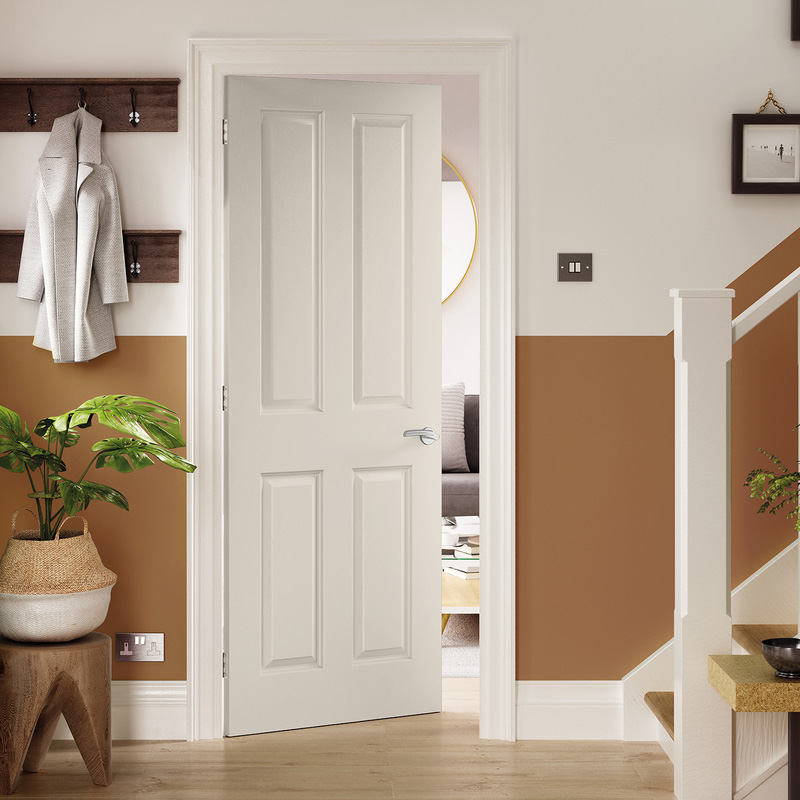
Panel Doors
Panel doors are a traditional type of door with smooth, slightly curved lines. They can be single, double, triple or quadruple panelled, and some or all panels may be glazed. Panel doors can be used anywhere in residential settings, such as bedrooms, kitchens or living rooms.

Glazed Doors
Glazed doors are made partly of glass so you can see through them. They allow light to flood through into the room which can brighten darker living spaces – such as the ‘middle room’ in traditional terraces. Glazed doors are commonly used in kitchens or living rooms where privacy isn’t essential.

Cottage Doors
Cottage doors have vertical panels, or slats, down the length of the door. They’re perfect for adding character to modern homes, as well as complementing traditional interiors. Cottage doors can be used anywhere around the home, and will suit both modern and traditional hardware such as hinges and handles.
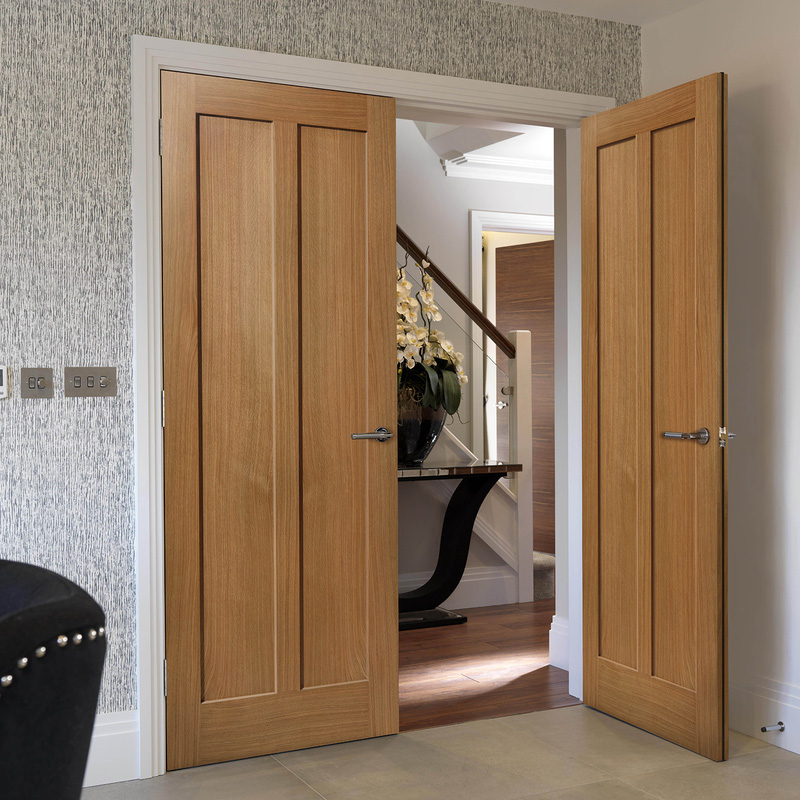
Shaker Doors
Shaker interior doors are similar to panelled doors, but have more solid, sharp lines. They are a cross between a traditional and contemporary style, making them ideal for any interior design. Some or all panels on shaker doors may be glazed to allow extra light into rooms.
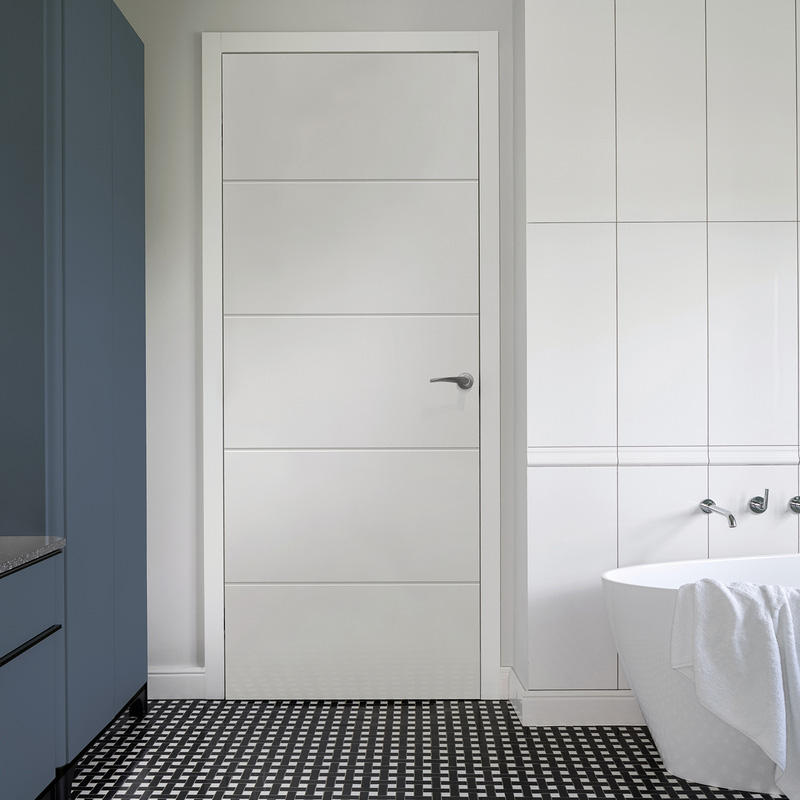
Flush Doors
Flush doors, as the name suggests, have a completely flush, flat surface on the back and front of the door. There can be some detailing, but they’re otherwise completely flat. Flush doors are perfect in contemporary homes and can also come at a lower cost than some other styles.
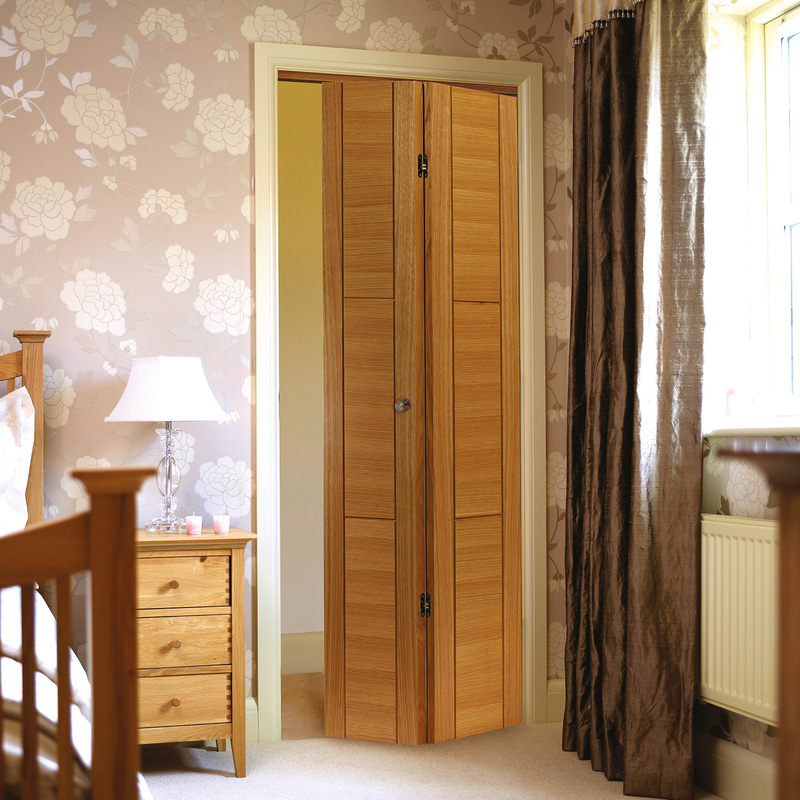
Bi-Fold Doors
Bi-fold interior doors look like regular panelled, cottage, shaker or glazed doors when closed, but are split in two vertically with the pieces connected by hinges. This allows the door to fold in half when open, which is perfect for saving space. Bi-fold doors are commonly used in small bedrooms or cupboards that need extra room.
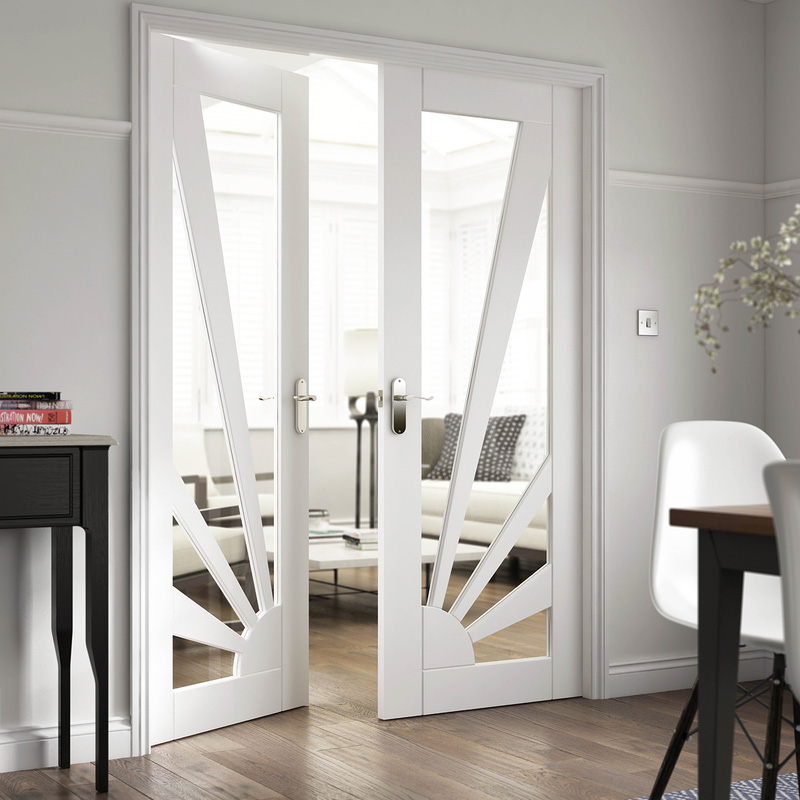
Decorative Doors
Decorative interior doors often feature glass arranged in a different pattern to simple panel or shaker doors. They offer an interesting feature to living rooms and kitchens, or any other room where privacy isn’t essential.
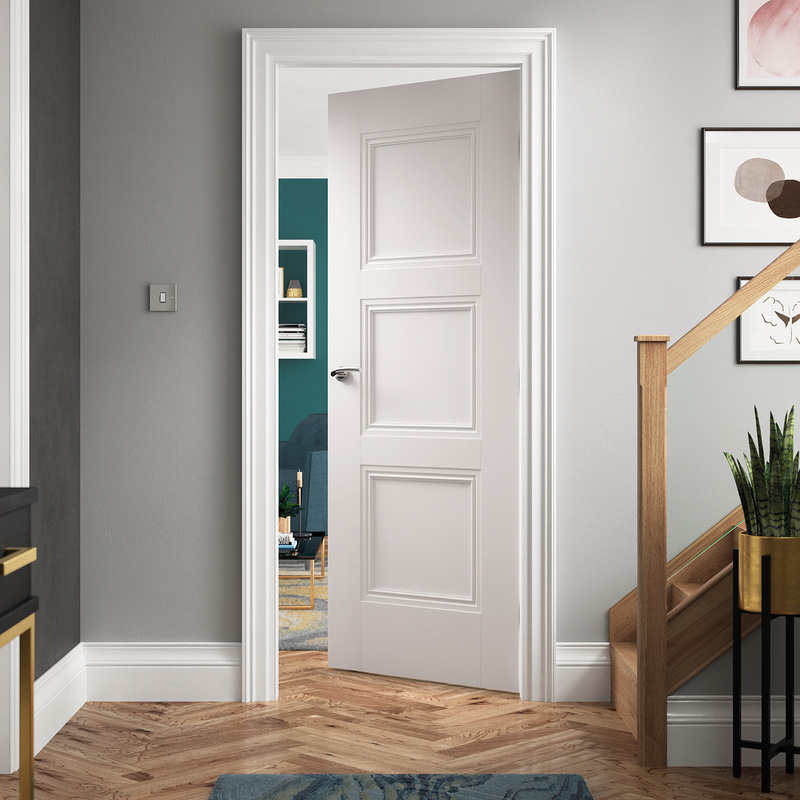
Fire-Rated Doors
Fire-rated interior doors are solid and will protect fire from spreading for at least 30 minutes. You’ll find a range of styles, including flush, shaker, cottage, panel and even glazed. Fire rated doors are often used in commercial settings such as between office rooms or around data centres, or in residential settings like children's bedrooms or kitchens.
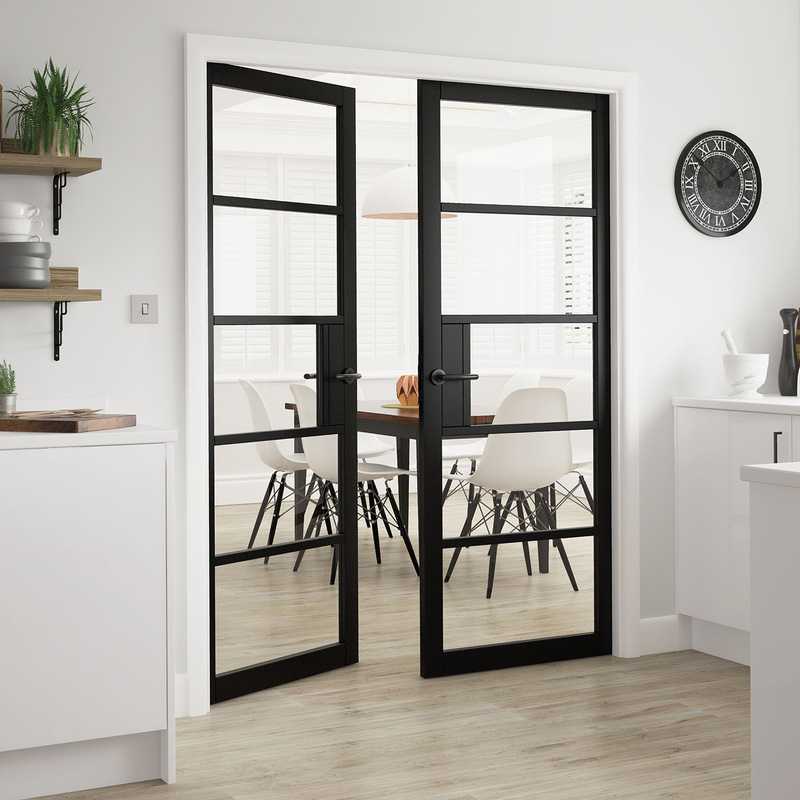
Urban Industrial Doors
Urban industrial doors are a style of door that are typically glazed with sharp, wide black panelling. They’re popular in modern homes and are used to allow a lot of light to flow between rooms, such as between living, kitchen and dining areas.
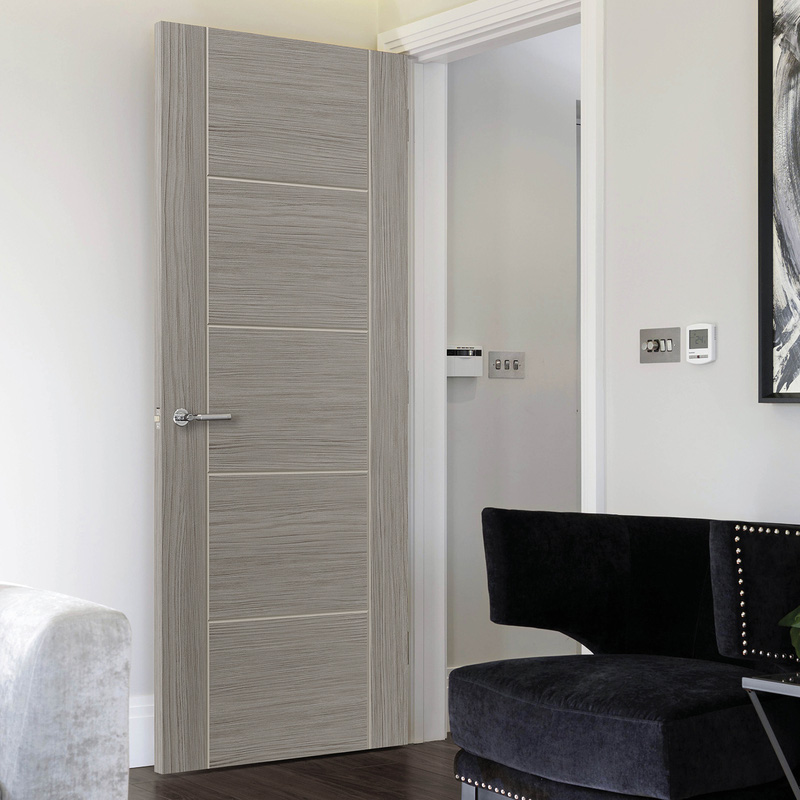
Laminate Doors
Laminate doors have a durable laminate coating which can come in a wide range of styles and colours. You’ll find plenty of grey laminate doors which perfectly suit modern homes. They’re fully finished, meaning they don’t need any maintenance beyond the occasional clean.

Contemporary Doors
Contemporary doors can cover a wide range of styles, but will generally be sleek, light coloured and simple. They’re often fully glazed which allows light to flow between rooms. Installing contemporary doors are an easy way to make a home feel more up-to-date.
How To Measure For A New Door
Step 1: Measure the door width
Step 2: Measure the door height
Step 3: Measure the door thickness
Key Internal Door Considerations
Material
Internal doors are usually made from MDF or moulded wood by-products. MDF is made from wood fibres combined with resin or wax, and formed into panels before being sealed. Moulded doors are similar, but made from wood by-products which are pressed together in the door’s style to make a low-cost and lightweight door.
Many doors are then coated with laminate or veneer. Laminate is a thin piece of plastic stuck to the surface of the door which can come in a range of styles. Veneer is similar, but an ultra-thin piece of real wood, instead of plastic, is stuck to the surface for a natural wood grain appearance.
Finish
You’ll find four main types of finish available for internal doors: fully-finished, painted, primed and unfinished. Pre-finished doors have been painted and/or varnished to a high standard and are ready to be installed. Painted doors have been painted in a colour or to give a natural wood-grain effect.
Primed doors have been prepared with an undercoat but need a top coat, so you have lots of freedom to choose the colour or style you want. Unfinished internal doors haven’t been primed, painted or varnished so you can choose a colour or leave the natural wood look.
Colour
You’ll find five main choices of internal door colour at Toolstation: white, oak, grey, walnut and black. White, grey and black doors can suit a range of styles, but will commonly be used for modern, contemporary homes and offices. White interior doors can also be used as a blank canvas to add your own colour on top.
Walnut interior doors feature a dark wooden colour which looks perfect in traditional or modern spaces to add warmth and character. Oak doors have a natural medium-brown colour and are perfect for complementing cottage and farmhouse interior design styles.
Size
Interior doors are most commonly 1981mm tall, but you’ll also find 2040mm and 2032mm interior doors if you have higher door frames. Most door frames can also be trimmed if your door frames are shorter.
Many internal doors will be between 610mm and 838mm wide, although there are some doors that will be narrower or wider than this to suit any room. Most interior doors are about 35mm to 40mm thick.
Door Hardware
When you’re choosing a door, you can’t forget door hardware – such as handles, hinges and locks. Consider your budget, style and the purpose of the room the door is in. You’ll find a range of colours for all door furniture, including chrome, black and gold.
Some door hardware will have star ratings which indicate the level of protection from intruders, which is usually not required for residential internal doors – but could be good to have in offices.
Certifire Accreditation
Certifire FD30 accreditation is given to doors that can stop fire from spreading between rooms. Doors with FD30 accreditation have been independently tested to ensure the doors stand up to fire safety standards.
These doors provide 30 minutes of protection and are commonly used in children’s bedrooms and kitchens.

